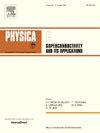Going Dutch: Jan Zaanen and the strange metals consortium
IF 1
3区 物理与天体物理
Q4 PHYSICS, APPLIED
Physica C-superconductivity and Its Applications
Pub Date : 2025-05-10
DOI:10.1016/j.physc.2025.1354746
引用次数: 0
Abstract
Under the visionary guidance of Jan Zaanen, a group of researchers within The Netherlands formed a consortium in 2018 to explore the physics of strange metals; its core objective to determine whether strange metals represent a novel quantum critical phase and whether this phase can be described by holographic emergence principles. The consortium itself brought together theorists working on, or at the boundaries of, the Anti-de Sitter/Conformal Field Theory (AdS/CFT) correspondence and experimentalists with collective expertise in optical conductivity, high-field magnetotransport, scanning tunneling spectroscopy (STS) and angle-resolved photoemission spectroscopy (ARPES). For reasons that will become apparent, the experimental team chose to perform their spectroscopy and transport studies on the same crystals of a single cuprate family – (Pb,Bi)2Sr2-xLaxCuO6+δ (Bi2201). Holographic signatures were indeed found in the nodal self energies observed by ARPES. Optical conductivity and magnetotransport also found evidence for the dual character of the strange metal phase, manifest in STS as a real-space differentiation into superconducting and non-superconducting regions. The evolution of the superconducting state with temperature and doping was found to be at odds with a conventional BCS picture. This compendium of the output of that consortium serves as both a tribute to Jan’s vision and perhaps, a signpost for how progress in such a complex field can be made through multiple experiments on the same material.
各付各的:Jan Zaanen和奇怪金属联盟
在Jan Zaanen富有远见的指导下,荷兰的一组研究人员于2018年成立了一个联盟,探索奇怪金属的物理学;其核心目标是确定奇异金属是否代表一种新的量子临界相,以及该相是否可以用全息涌现原理来描述。该联盟本身汇集了从事反德西特/共形场论(AdS/CFT)对应或在其边界工作的理论家,以及在光学电导率、高场磁输运、扫描隧道光谱(STS)和角分辨光电光谱(ARPES)方面具有集体专业知识的实验家。由于显而易见的原因,实验团队选择对单一铜酸盐家族的相同晶体(Pb,Bi)2Sr2-xLaxCuO6+δ (Bi2201)进行光谱和输运研究。在ARPES观测到的节点自能中确实发现了全息签名。光学导电性和磁输运也发现了奇怪金属相的双重特征的证据,在STS中表现为超导和非超导区域的实空间分化。发现超导态随温度和掺杂的演变与传统的BCS图不一致。这个联合体的产出摘要既是对Jan的愿景的致敬,也许也是一个路标,说明如何通过在同一材料上进行多次实验,在这样一个复杂的领域取得进展。
本文章由计算机程序翻译,如有差异,请以英文原文为准。
求助全文
约1分钟内获得全文
求助全文
来源期刊
CiteScore
2.70
自引率
11.80%
发文量
102
审稿时长
66 days
期刊介绍:
Physica C (Superconductivity and its Applications) publishes peer-reviewed papers on novel developments in the field of superconductivity. Topics include discovery of new superconducting materials and elucidation of their mechanisms, physics of vortex matter, enhancement of critical properties of superconductors, identification of novel properties and processing methods that improve their performance and promote new routes to applications of superconductivity.
The main goal of the journal is to publish:
1. Papers that substantially increase the understanding of the fundamental aspects and mechanisms of superconductivity and vortex matter through theoretical and experimental methods.
2. Papers that report on novel physical properties and processing of materials that substantially enhance their critical performance.
3. Papers that promote new or improved routes to applications of superconductivity and/or superconducting materials, and proof-of-concept novel proto-type superconducting devices.
The editors of the journal will select papers that are well written and based on thorough research that provide truly novel insights.

 求助内容:
求助内容: 应助结果提醒方式:
应助结果提醒方式:


